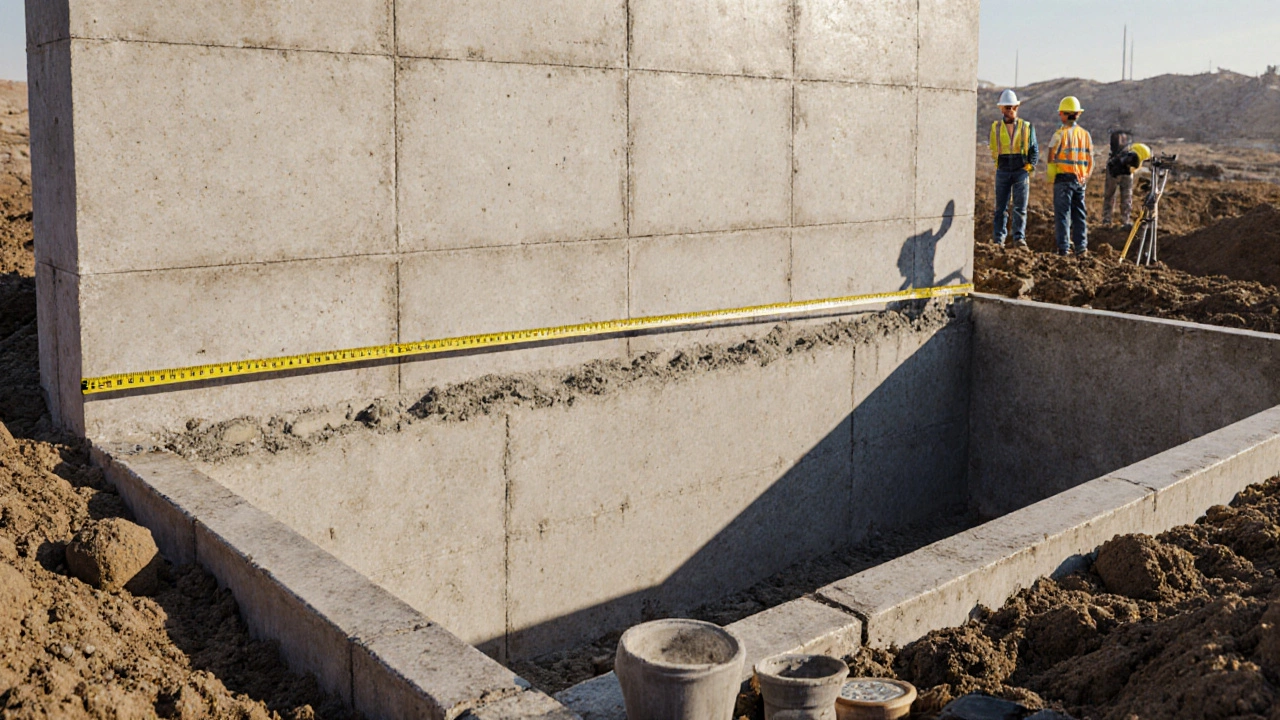Commercial Construction: What You Need to Know
If you’re thinking about a commercial build, you probably have a lot of questions. What makes a project ‘commercial’? How do the costs differ from a house? Which materials keep the building safe? This guide breaks down the essentials in plain English so you can move forward with confidence.
What makes a building commercial?
A building is tagged as commercial when its main purpose is to support business activities – offices, shops, warehouses, schools, clinics, you name it. The key signs are the zoning label, the building code it must follow, and the way the space is used day‑to‑day. Unlike a home, a commercial property often needs bigger floor plates, higher load capacities and more fire‑safety features.
Choosing the right construction type
Commercial projects fall into a few common construction families. Type A uses non‑combustible materials and is the most fire‑resistant – think high‑rise office towers. Type B mixes non‑combustible and some combustible parts, suitable for mid‑rise buildings. Type C and Type 5 lean on wood or light‑frame methods, ideal for smaller shops or warehouses. Picking the right type affects cost, schedule and long‑term maintenance.
Fire safety is a big driver in the decision. Materials like steel and concrete hold up better under heat, while wood frames need extra treatment and fire‑rating approvals. If you’re building a grocery store or a school, the fire‑resistant options are usually required by law. Knowing the local fire code early saves you from redesigns later.
Cost differences are stark. A Type A project can cost double a Type 5 build because of the materials and the engineering work needed. However, the higher upfront spend often means lower insurance and fewer repairs down the road. Budget planners should factor in not just the material price but also the long‑term operational costs.
Don’t forget the garage doors. In a commercial setting they’re more than just an entry point – they affect security, energy loss and even fire spread. Choosing a door with proper insulation and fire rating can cut utility bills and keep the building safer. A reputable garage‑door installer can advise on the right size, material and automated system for your needs.
Common mistakes include skipping the zoning check, under‑estimating the load capacity for equipment, and ignoring the fire‑rating requirements for doors and walls. A cheap shortcut on the door frame can lead to costly repairs or a failed inspection. Always verify that every component meets the local building regulations.
Getting professional help early can make the process smoother. A construction consultant will map out the right type, run cost simulations and flag any code issues before you break ground. Pair that with a specialist garage‑door service, and you’ll have both the structure and the entry points covered.
Bottom line: commercial construction is a blend of purpose, code, material choice and budget. Start with a clear picture of how the space will be used, pick the construction type that matches that use, and don’t overlook the doors that protect it. With the right plan and the right experts, your project can stay on schedule, on budget, and safe for years to come.

Why Commercial Mortgage Rates Are Higher Than Residential
Dec 4, 2025, Posted by Damon Blackwood
Commercial mortgage rates are higher than residential because of greater risk, shorter loan terms, unpredictable income, and lower liquidity. Learn why businesses pay more and how to get better terms.
MORE
What Is the 1:3 Rule in Construction?
Nov 17, 2025, Posted by Damon Blackwood
The 1:3 rule in construction ensures structural stability by requiring footings to be three times wider than the wall height they support. Essential for commercial buildings, it prevents settling and cracks by evenly distributing load into the ground.
MORE
Commercial vs Residential Construction: Which Is Better?
Oct 14, 2025, Posted by Damon Blackwood
Compare commercial and residential construction on cost, timeline, regulations, ROI and risk. Get a clear checklist, table and FAQ to decide which path fits your goals.
MORE
Industrial vs Commercial Construction: Are They the Same?
Oct 9, 2025, Posted by Damon Blackwood
Explore the differences between industrial and commercial construction, covering purpose, regulations, costs, timelines, and how to pick the right contractor.
MORE
Is a School a Commercial or Industrial Building? Expert Guide to Classification
Jul 23, 2025, Posted by Damon Blackwood
Wondering if schools count as commercial or industrial buildings? Here's a clear take on their classification, purpose, and what it means for construction and regulations.
MORE
Commercial vs Residential Real Estate: Where Should You Begin?
Jun 6, 2025, Posted by Damon Blackwood
Torn between starting in commercial or residential real estate? This article breaks down the money, daily grind, skills you’ll need, and how risky each path can get. Learn what surprises new agents, what paychecks actually look like, and why some folks switch tracks after a year. If you’re eyeing a future in construction, property management, or flipping buildings, you’ll find clear, honest advice here.
MORE
Type C Construction: What It Is and Why It Matters
May 20, 2025, Posted by Damon Blackwood
Type C construction is a term you'd hear often if you're dealing with commercial buildings in Australia and some other regions. This article explains what type C construction actually means, how it's different from types A and B, and which buildings typically use it. You'll get practical tips on what to expect if you're working on or investing in a type C building. We’ll also clear up common misconceptions so you can make better decisions around safety, compliance, and costs.
MORE
Commercial vs Residential Buildings: Real Differences That Matter
May 14, 2025, Posted by Damon Blackwood
Trying to figure out the real differences between commercial and residential buildings? This article breaks it down in simple terms—think purpose, design, rules, and money talk. Get practical tips on what matters for property owners, builders, and anyone eyeing real estate. No jargon, just facts you can use if you’re thinking about construction or investing. Get clear insights to help you make smart decisions.
MORE
What Makes a Building Commercial? Key Factors Explained
May 9, 2025, Posted by Damon Blackwood
What actually turns a building into a 'commercial' one? This article breaks down the real differences between commercial and other types of construction. You’ll get honest tips, straight facts, and clear examples—from zoning to building codes to how these spaces get used every day. Find out what sets commercial buildings apart, and why it matters for owners, builders, and even tenants. Get a grip on the details without wading through legal or boring jargon.
MORE
Civil Construction vs Commercial Construction: What Sets Them Apart?
May 5, 2025, Posted by Damon Blackwood
Civil construction and commercial construction might sound similar, but they’re worlds apart in what gets built, how it’s done, and who it serves. This article breaks down the main differences, matching real-life examples to each type. You'll learn which kinds of projects fall under each, what skills and rules are needed, and why it matters for budgets and timelines. Plus, get practical tips if you’re thinking of starting a project. The goal: make it easy to know which type of construction fits your plan.
MORE
Fire-Resistant Construction Types: Which Really Holds Up?
May 2, 2025, Posted by Damon Blackwood
This article explains which types of construction are the most fire-resistant for commercial buildings. It breaks down the different categories, lays out how materials and methods matter, and highlights real-world examples and regulations. You'll find practical tips for making your building safer and more compliant. If you've ever wondered what actually works in a fire, this one’s for you.
MORE
What is the Opposite of Commercial Construction? Breaking Down the Basics
Apr 21, 2025, Posted by Damon Blackwood
If you’ve ever wondered what stands on the other side of commercial construction, this article breaks it all down in clear terms. We’ll look at what makes commercial projects different from their opposite—residential construction—and why that matters. Discover how the aims, requirements, and day-to-day challenges compare. You’ll walk away knowing when a job is considered commercial or residential, and why these lines matter for budgets and building codes. Useful facts and straightforward tips are packed in for anyone curious about the construction world.
MORESEARCH HERE
Categories
TAGS
- foundation repair
- construction
- commercial construction
- new builds
- home improvement
- home renovation
- bathroom renovation
- construction materials
- home foundation
- renovation tips
- residential construction
- building types
- foundation cracks
- home construction
- construction differences
- kitchen installation
- real estate
- house foundation
- structural integrity
- home maintenance